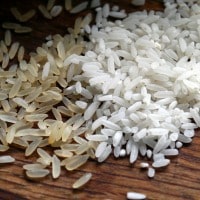One percent of Americans have been diagnosed with Celiac Disease, and must adhere to a gluten-free diet. Additionally, many people have turned to a gluten-free diet as they feel that it helps them with health issues, such as inflammation. However, a recent study shows that such a diet might boost the risk for mercury and arsenic exposure. These are highly toxic metals that can cause cardiovascular disease, neurological problems and even cancer. The details of the research were recently published in the journal Epidemiology.
The Risks of a Gluten-free Diet
Gluten is a protein in barley, rye and wheat. Food products that are gluten-free tend to be made with rice flour rather than wheat. Rice bioaccumulates some toxic metals like mercury and arsenic. This accumulation occurs as a result of exposure to metal-laden fertilizers, water and soil. Though little is known about the ramifications of a diet that is high in rice, it is widely known that toxic metals are terrible for human health.
A whopping 25 percent of Americans went gluten-free in 2015. This is about a two-thirds increase since two years prior. Going gluten-free makes sense for those with celiac disease as gluten induces a chaotic immune response. Many others have determined that they feel better refraining from eating gluten for various physical and mental reasons.
About the Study
Assistant professor of epidemiology at the UIC School of Public Health, Maria Argos, examined data derived from the National Health and Nutrition Examination Survey along with the help of her colleagues. These researchers were on the prowl for a connection between gluten-free diets and the signature biomarkers for toxic metals in urine and blood. Argos’ team pinpointed over 70 participants who consumed gluten-free foods out of nearly 7,500 who filled out the survey between ’09 and ’14. The study’s participants were between the ages of 6 and 80 years old.
Those who reported consuming gluten-free foods had an elevated concentration of mercury within their blood and an elevated level of arsenic within their urine. It is particularly interesting to note that arsenic levels in the gluten-free crowd were nearly double the levels of those who consumed foods with gluten. The gluten-free crowds’ mercury levels were 70 percent higher than those who consumed food with gluten.
How the Study Results Should be Interpreted
The study results show that there are several unintended consequences of consuming foods void of gluten. Additional studies must be performed to determine if there are legitimate health consequences from a heightened exposure to mercury and arsenic as a result of a gluten-free diet. Subsequent research will help piece together this puzzle.
There are regulations for arsenic levels in food across Europe. Maybe it is in the public’s interest for the government of the United States and other nations to legislate similar regulations as more people turn to gluten-free diets.
What to do about this
It’s not simply going gluten free that raises these risks, but how one goes gluten free. Refraining from eating too many processed gluten-free foods that are made with rice flour and/or rice syrup should be considered. Alternative flours, such as almond and coconut should be considered when baking. Brown rice tends to have more arsenic than white rice. According to Consumer Reports, Basmati rice from California is the lowest in arsenic. Millet is a viable alternative as it is fluffy like rice when cooked and has far less arsenic. Quinoa is a low-arsenic grain, high in protein, that may be substituted, as well.




